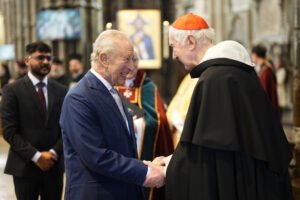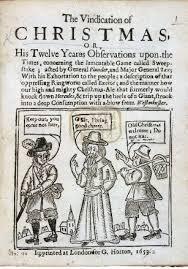Conclave Smoke Signals Ready: Vatican Installs Chimney Over Sistine Chapel
Introduction to the Conclave
The conclave is a significant event in the Roman Catholic Church, primarily convened to elect a new pope following a vacancy in the papacy. This solemn gathering consists of cardinals who are summoned to the Vatican with the responsibility of choosing the successor to Saint Peter. The term “conclave” derives from the Latin phrase “cum clave,” meaning “with a key,” which symbolizes the closed nature of the voting process where the cardinals are locked away until a decision is made.
The significance of the conclave extends beyond the mere selection of a new pope; it embodies the values and traditions of the Roman Catholic Church, showcasing its governance and continuity. Historically, the conclave dates back to the Middle Ages, though its practices have evolved over the centuries. The conclave serves to ensure that the election of the pope is conducted with due diligence, and secrecy, and, when necessary, under the scrutiny of the Holy Spirit’s guidance.
Upon the papal vacancy, usually caused by the death or resignation of a pope, the cardinals convene in the Sistine Chapel for the conclave. The protocols are strictly followed, starting with a Mass for the election of the pope, which seeks divine assistance in the decision-making process. The cardinals participate in multiple rounds of voting, with the aim of reaching a two-thirds majority to elect the new pontiff. After each voting session, ballots are burned, producing white smoke to signify a successful election or black smoke to indicate that no candidate has yet achieved the necessary majority.
Rituals such as prayer and reflection are integral to the conclave, underscoring its spiritual significance. This blend of tradition, solemnity, and governance encapsulates the essence of the conclave, which remains a vital aspect of the Roman Catholic Church’s electoral processes.
The History of the Sistine Chapel
The Sistine Chapel, an integral part of the Vatican City, is a cornerstone of Renaissance art and architecture. Commissioned by Pope Sixtus IV in 1473, the chapel was originally intended for the papal liturgical functions. Its name honors Pope Sixtus, reflecting his vision to create a space that would epitomize both spiritual and artistic innovation. The chapel’s architecture, designed by Baccio Pontelli, is a masterpiece of Renaissance design, characterized by its grand scale and harmonious proportions, combining both Gothic and Classical elements.
Central to the chapel’s significance is its role in the papal conclave, where cardinals gather to elect a new pope. The elaborate ceremonies, steeped in tradition, utilize the chapel’s sacred space for the selection of the Holy Father, making it not only a site of artistic heritage but also a pivotal venue of Catholic governance. Over the years, the Sistine Chapel has witnessed countless historic moments, ranging from papal elections to state events.
One of the most noteworthy features of the chapel is its breathtaking frescoes, painted by the likes of Michelangelo, Botticelli, and Perugino. Michelangelo’s ceiling frescoes, depicting scenes from Genesis, such as “The Creation of Adam,” are iconic works that have captivated millions. The Last Judgment, which adorns the altar wall, further exemplifies Michelangelo’s genius and has drawn extensive admiration for its dramatic composition and profound theological implications. These masterpieces not only illustrate biblical narratives but also reflect the social and cultural dynamism of the Renaissance period.
As a testament to its artistry and historical significance, the Sistine Chapel continues to attract visitors and pilgrims alike. Its dual legacy as a site of divine worship and artistic expression ensures that it remains a symbol of the Catholic Church’s enduring spiritual and cultural influence throughout history.
Significance of the New Chimney Installation
The installation of a new chimney over the Sistine Chapel serves a multitude of purposes, each one steeped in tradition and symbolic meaning. First and foremost, this chimney acts as a central communication tool during the papal conclave, specifically designed to signal the election results to the public. The color of the smoke emitted from this chimney plays a pivotal role in conveying critical information: white smoke indicates a successful election of a new pope, while black smoke signifies that no consensus has been achieved among the voting cardinals.
The design of the chimney is not merely functional; it embodies a deep respect for the architectural heritage of the Vatican. The structure, crafted with care to blend seamlessly with the historical significance of the Sistine Chapel, showcases both modern engineering and traditional aesthetics. This careful integration of the chimney aligns with the Vatican’s commitment to preserving its iconic visual identity while also embracing innovation in its functions.
Moreover, the establishment of the new chimney is especially pertinent in our current era of rapid communication. In an age where news happens instantaneously, the conclave’s transparency is vital. The smoke signals from the chimney allow the public, both in Rome and globally, to engage in the anticipation of the new pope’s election, thus fostering a sense of collective participation among the faithful. The instant visibility of the smoke signals eradicates delays, enabling timely public awareness of the crucial event unfolding within the Vatican walls.
This combination of tradition and modernity ensures that the chimney not only fulfills its practical role but also enhances the significance of the conclave as a moment in the liturgical calendar. With each puffs of smoke, the chimney strengthens the bond between the Church’s leadership and its congregation, reaffirming its commitment to communication and shared experiences. The new chimney is, therefore, not just an architectural update but a meaningful element in the ritual of selecting the Catholic Church’s leader.
Understanding the Smoke Signals: White and Black Smoke
The conclave, a significant event in the Catholic Church’s heritage, is marked by a unique signaling system using smoke signals from the chimney of the Sistine Chapel. This tradition plays a crucial role in communicating the outcomes of the voting process for a new pope to the faithful gathered outside. The two primary smoke signals, white and black, each convey distinct messages related to the status of the election.
White smoke serves as a triumphant announcement, signaling the successful election of a new pope. This smoke is produced by burning ballots that contain the names of the elected individual, mixed with a specific chemical that ensures the smoke appears white and is easily distinguishable. The sight of white smoke rising from the chimney is met with joyous celebration and anticipation, as it indicates that the cardinals have reached a consensus and that the church will soon have a new leader. This moment is historically significant, representing unity within the papal conclave.
Conversely, black smoke is a sign of indecision, indicating that the cardinals were unable to select a candidate during their voting sessions. This type of smoke results from burning ballots that do not yield a majority vote, along with a combination of materials that produce a darker coloration. The appearance of black smoke serves as a reminder of the challenges faced in the selection process and the need for further deliberation among the cardinals. This phase can often prolong the conclave, leading to continued prayers and support from those awaiting the election outcome.
These smoke signals, while simple in their visual presentation, carry profound significance for both the cardinals within the chapel and the global Catholic community eagerly awaiting the news of a new papal leader. Understanding the meanings behind these signals enhances the appreciation of a rich tradition that has persisted for centuries.
Modernization: Changes in Tradition
The installation of the chimney over the Sistine Chapel serves as a poignant example of the Vatican’s response to the evolving landscape of modernity while respecting longstanding traditions. Historically, the ritual of electing a new pope has been steeped in centuries-old customs, characterized by elaborate ceremonies, solemn rituals, and a strong connection to the heritage of the Catholic Church. However, as the world transforms at a rapid pace, the Vatican is progressively incorporating technological advancements into these time-honored practices without compromising their core significance.
The chimney, designed to facilitate the communication of the results of the papal conclave to the thousands of faithful gathered in St. Peter’s Square, underscores this fusion of tradition and modernity. By employing contemporary materials and techniques, the Vatican not only enhances the efficiency of this important ritual but also aligns itself with the demands of a modern audience accustomed to instant communication and real-time updates. This move is significant, as it signifies the Church’s willingness to adapt while firmly holding onto its sacred traditions.
Moreover, the installation of the chimney reflects a broader trend within the Vatican to embrace innovation in various domains. From digital communication channels to improved security measures, the Church continues to modernize its approaches, thereby enhancing engagement and outreach. This nuanced balancing act ensures that the essence of the Church’s rituals remains intact, even as the tools and methodologies evolve. In doing so, the Vatican reinforces its relevance in contemporary society, encouraging dialogue and connection with a diverse global community.
Ultimately, the chimney over the Sistine Chapel is more than a structural addition; it symbolizes the Vatican’s commitment to preserving its heritage while embracing change. As the Church moves forward, the integration of modern technologies into traditional practices stands to enrich the spiritual experience for followers around the world.
Community and Global Reactions
The installation of a chimney over the Sistine Chapel has sparked a flurry of reactions from both the local Roman community and a global audience, each expressing a mix of excitement and anticipation. For many locals, this act signifies an impending moment of historical magnitude as the College of Cardinals prepares to convene for the papal conclave. The chimney installation, integral to the conclave process, emits smoke signals that indicate whether a new pope has been elected. The traditional black smoke denotes failed votes, while white smoke announces a new pontiff, making the chimney a crucial focal point for both residents and visitors.
This community excitement is palpable, with many Romans gathering around St. Peter’s Square, hoping to witness the momentous event. Local businesses are starting to prepare for an influx of visitors, as the conclave draws attention from around the world. Cafes and restaurants near the Vatican are already planning special events and promotions to take advantage of the anticipated surge in tourism. Furthermore, the emotional weight of the occasion resonates through the community, as many citizens reflect on the continuity of their Catholic heritage and its impact on the global Church.
<pglobally, a="" abound,="" about="" address="" amid="" amidst="" and="" anticipation="" as="" believers.="" beyond="" can="" challenges.="" change,="" chimney="" church,="" church.="" climate="" conclave="" conclave's="" contemporary="" decisions="" dialogue="" discussions="" discussions,="" disseminating="" during="" emerged="" engagement="" even="" everyday="" expressing="" far="" for="" fostering="" from="" future="" global="" has="" have="" hopes="" how="" illustrates="" inclusivity="" individuals="" installation="" issues="" justice,="" leader="" leaders="" made="" making="" many="" marking="" media="" more="" news="" of="" online="" p="" pivotal="" platform="" profound.
The Role of Media During the Conclave
The conclave, a significant event in the Catholic Church, requires careful orchestration of communication to ensure transparency and engagement with the global audience. The media plays a crucial role during this period, serving as the primary conduit between the Vatican and the public. Journalists are tasked with not only reporting the developments within the Sistine Chapel but also interpreting their implications for the Church and its followers worldwide.
One of the primary challenges faced by journalists during the conclave is the intense scrutiny under which they operate. Armed with varying degrees of access to the proceedings, reporters must balance their duty to inform the public with the expectation of respecting the sacred and confidential nature of the elections. They are tasked with delivering timely and accurate updates while navigating a web of traditions that may limit the flow of information. For example, the announcement of the new pope often comes embedded in ritualistic protocol, requiring reporters to be knowledgeable and sensitive to the nuances of the Church’s practices.
Furthermore, the responsibilities of the media extend beyond merely broadcasting the events. They must analyze behaviors, statements, and election outcomes against a backdrop of historical context, contributing to a richer understanding of the significance of the conclave. In an age where digital media prevails, journalists have the added responsibility to communicate developments in real time through social media platforms, blogs, and live broadcasts, thus engaging a broader audience. This increased demand for immediacy can sometimes lead to the spreading of speculation rather than confirmed information, highlighting the importance of ethics in journalism during such critical events.
In conclusion, the media plays a pivotal role in shaping perceptions of the conclave, offering insights and updates while navigating the complexities of their responsibilities and the sanctity of the event.
Implications for the Catholic Church’s Future
The installation of the chimney signalizes a pivotal moment in the Catholic Church’s history, marking the beginning of a conclave that is poised to redefine its trajectory. As cardinals gather to elect a new pope, the potential for transformative changes within the Church’s hierarchy and doctrinal positions becomes apparent. This conclave represents not merely a transition in leadership but also an opportunity for reevaluation of the Church’s approaches to pressing contemporary issues.
In the context of leadership style, the new pope may introduce a shift towards greater transparency and inclusivity. By adopting a pastoral approach, future leadership could address the growing disconnect between the Church and its congregants, particularly among younger generations. This could involve a re-engagement with the laity and more open dialogue regarding sensitive issues such as morality, sexuality, and globalization. Such changes may foster a more relatable and approachable Church, potentially revitalizing its influence in a rapidly changing world.
The election of a new pope also signals an indeterminate yet critical evaluation of the Church’s doctrines. With various factions within the Church advocating for reform, the new leadership may reconsider traditional teachings to align more closely with contemporary values, encompassing social justice, environmental stewardship, and the rights of marginalized communities. Instilling a modern perspective within Church dogma could encourage broader acceptance and participation from diverse demographic groups who feel alienated by orthodox views.
Moreover, the Church’s response to global challenges, including societal inequalities and the ecological crisis, may gain prominence under fresh leadership. A pope committed to addressing such concerns may inspire a movement towards more active engagement in social issues, galvanizing support from the international community and enhancing the Church’s moral authority.
In conclusion, the implications of the conclave and the election of a new pope are profound, with the potential to significantly reshape the future of the Catholic Church. As the new leadership emerges, it will be essential to observe how these changes manifest in both doctrine and practice, ultimately determining the Church’s relevance in contemporary society.
Conclusion: Symbolism of the Chimney
The installation of the chimney over the Sistine Chapel serves as a profound symbol during a papal conclave, encapsulating the intersection of tradition, faith, and communication within the Catholic Church. The chimney’s primary function, to signal the outcome of the conclave through the emission of smoke, connects the Vatican directly with millions of faithful Catholics around the world. When the cardinals have concluded their deliberations and have elected a new pope, the color of the smoke signifies the result: white smoke indicates a new pontiff has been chosen, while black smoke conveys that no decision has yet been reached. This duality highlights the tension inherent in such crucial moments, while also illustrating the transparency, or lack thereof, in the voting process.
Moreover, the chimney represents a tangible link between the Vatican and the global Catholic community. It transforms the often private and secretive proceedings of the conclave into a public event experienced by the faithful, creating a sense of shared anticipation and unity. As smoke rises from the chimney, it carries with it the hopes and prayers of millions, reinforcing the communal aspects of faith during a time of significant transition. This simple but powerful act of signaling represents more than just an announcement; it encapsulates the rich history and ritualistic essence of the papal election process.
Ultimately, the chimney over the Sistine Chapel stands as a testament to the continuity of tradition within the Catholic Church. It serves as a reminder of the church’s commitment to remain connected with its global congregation, emphasizing that despite the inner workings of the conclave, the heart of the Catholic faith continues to beat in a world hungry for spiritual guidance and leadership.











Leave a Reply
You must be logged in to post a comment.